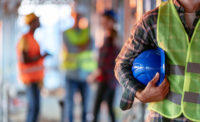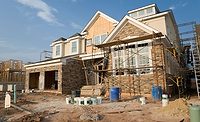What Impact Does Residential Construction Have on the U.S. Economy?
Building 1,000 average single-family homes creates 2,900 full-time jobs and generates $110.96 million in taxes and fees for all levels of government, according to NAHB’s “National Impact of Home Building and Remodeling” report.

A recent study from the National Association of Home Builders (NAHB) shows that housing stands poised to lead the economic rebound once social distancing and other virus mitigation efforts show success in containing the coronavirus pandemic. Building 1,000 average single-family homes creates 2,900 full-time jobs and generates $110.96 million in taxes and fees for all levels of government to support police, firefighters, and schools, according to NAHB’s “National Impact of Home Building and Remodeling” report. Similarly, building 1,000 average rental apartments generates 1,250 jobs and $55.91 million in taxes and revenue for local, state, and federal government. Moreover, $10 million in remodeling expenditures creates 75 jobs and nearly $3 million in taxes.
“Before the coronavirus pummeled the U.S. economy, housing was on the rise with January and February new home sales numbers posting their highest reading since the Great Recession,” said Dean Mon, NAHB chairman and a home builder and developer from Shrewsbury, N.J. “The demand is clearly there, and as this study shows, we expect that housing will play its traditional role of helping to lead the economy out of recession later in 2020 when the pandemic subsides.”
The NAHB model shows that job creation through housing is broad-based. Building new homes and apartments generates jobs in industries that produce lumber, concrete, lighting fixtures, heating equipment, and other products that go into a home remodeling project. Other jobs are generated in the process of transporting, storing, and selling these products. Additional jobs are generated for professionals such as architects, engineers, real estate agents, lawyers, and accountants who provide services to home builders, home buyers, and remodelers.
In another sign of the important role that housing plays in the economy, the Department of Homeland Security announced on March 28 that it had designated construction of single-family and multifamily housing as an Essential Infrastructure Business, meaning that construction could continue in places under stay-at-home orders. Although this designation is not binding to state and local governments, it does mean that there could be more workers on job sites in the coming weeks.
“Ensuring the health and safety of home builders and contractors is our top priority,” said Mon. “This is why NAHB and construction industry partners have developed a Coronavirus Preparedness and Response Plan specifically tailored to construction job sites. The plan is customizable and covers areas that include manager and worker responsibilities, job site protective measure, cleaning and disinfecting, responding to exposures incidents, and OSHA record-keeping requirements.”
Additional details are available in the study and at www.nahb.org.
Looking for a reprint of this article?
From high-res PDFs to custom plaques, order your copy today!





